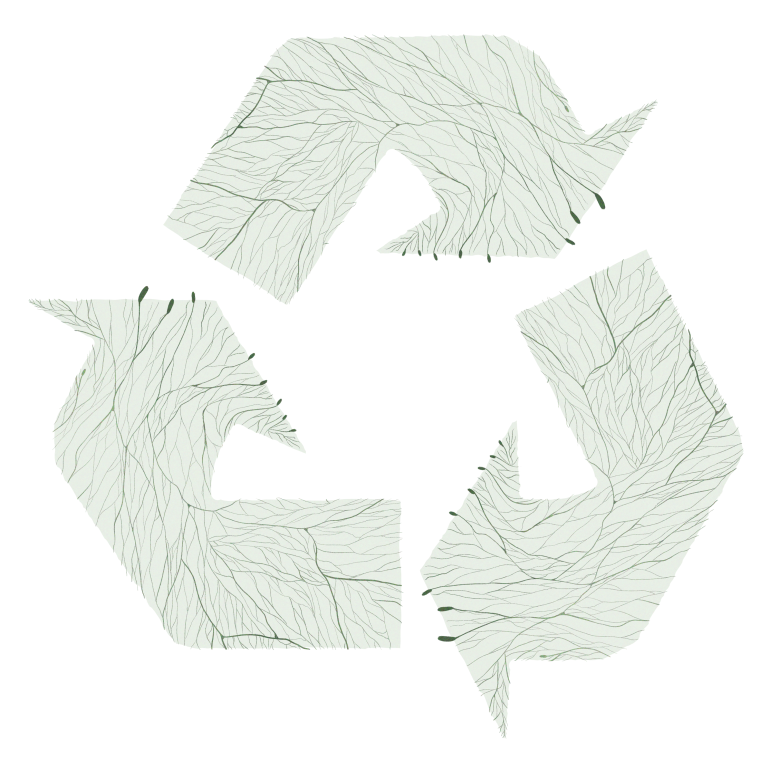Life in the 21st century often feels like a never-ending doom scroll. Oil spills. Hazardous waste polluting soil in the wake of forest fires. Lead-contaminated drinking water. Nuclear radiation. What do these problems have in common? First of all, they are common, localized disasters caused by our modern, industrial world—which contribute in a myriad of ways to the current mass-extinction event on Planet Earth. And secondly, each of these human-made threats to life share a remedy: fungi.
Like any solution to complex problems, fungi do not offer a silver bullet. The scientific community has barely begun to scratch the surface on the fungi kingdom in general, much less on the incredible applications of individual species to mitigate threats to our ecosystem. But across the globe, from Chernobyl to Spokane, fungi are demonstrating remarkable abilities to process and remove contaminants at sites of ecological harm. Fungi can clean soil and water of crude oil, radiation, microplastics and heavy metals. This process is called mycoremediation and it is effective, cheap, and in some cases, offers edible mushrooms as a byproduct.
We are lacking an actionable, global consensus on addressing climate change, and are plagued by a grotesque shirking of accountability from corporations and governments—the responsible parties for environmental disasters. As a recent example, union efforts thwarted by the United States congress and President Joe Biden to strengthen safety protocols could have prevented the catastrophic train derailment in East Palestine, Ohio on February 3rd.
We need practical methods of stewardship that do not rely on the conscience of CEOs, senators, and lobbyists. Lifestyle choices such as commuting via bicycle, buying a Tesla, or sorting your recycling products (commonly marketed as “reducing your footprint”) are not enough to stop the deadly pollution of our waterways and air. To have meaningful effect, we need to turn our efforts directly to the source: the earth, and the extraordinary kingdom of organisms with the power to solve these problems.
*
Fungi at a glance
With a mere 148,000 species identified and described by science, it is now estimated the fungi kingdom includes between 2.2 and 3.8 million species. Described as the “link between animals and plants” by Paul Stamets, (author of Mycelium Running: How Mushrooms Can Save the World,) fungi are vital to ecosystems as prolific decomposers of matter. The vegetative fungal growth in the soil (or other tissue) forms large, web-like structures, called mycelium. Threads of these mycelial webs (called hyphae) secrete enzymes into or onto its “food,” breaking down matter to a molecular level and redistributing it throughout the mycelial web in a process called “active transport.” Mycelial webs interact with other life forms in the soil, sharing and distributing energy with the roots of trees and plants. The health of a forest depends on mycorrhizae—the symbiotic network created by the connection of mycelium and the roots of plants. This is affectionately known as the “wood-wide web.”
Mycelium’s biggest claim to fame is in producing the fruiting bodies known as mushrooms. Mushrooms are diverse in and of themselves. Human beings have long ingested mushrooms for many reasons: some taste good, some help rebuild human cells during cancer treatment, and some cause psychotropic effects on the brain (see the Pacific Sentinel’s January issue for Daniel Bloomfield’s article exploring therapeutic applications of the latter.)
Amazingly, a mycelial web is a single organism. In fact, the current title of “largest organism on Earth” is held by a honey fungus specimen in Eastern Oregon—comprising over 2,000 acres in the Malhuer National Forest. The Armillaria ostoyae is a single living organism connecting with roots of millions of individual trees and plants; it is estimated to be between 2,400 and 8,000 years old.
These unique traits are what make fungi well-suited to handle pollutants in localized areas. Utilizing enzymes in its mycelial web, fungi can quickly and dramatically decontaminate environments and waterways.
Here are five ways mycoremediation has the potential to clean up human-caused disasters and restore balance to the force.
1. Radioactive Waste Sites
In 1991, five years after Reactor No. 4 melted down at the Chernobyl Nuclear Power Plant outside Pripyat, Ukraine (then U.S.S.R.), “radiotrophic” fungi were discovered growing inside the plant. Since then, research at the Albert Einstein College of Medicine identified three species of fungi that appear to consume radiation, breaking down radionuclides for energy in a unique process called radiosynthesis.
Radiotrophic fungi have not yet been studied in depth, but scientists on the International Space Station published results from a 2020 study on how the strain Cladosporium sphaerospermum can be used to as a literal shield (9-21mm thick) to protect astronauts from ionizing radiation en route to Mars.
Back home on Earth, radiotrophic fungi have much more practical potential. With at least 21 “stranded” nuclear waste sites in the United States alone, and many times more than that globally, we could cultivate radiotrophic fungi to begin processing our otherwise dangerous lodes. (To give credit where credit is due; scientists have also discovered strains of bacteria capable of processing radiation.)
2. Contaminated Waterways
In a 2020 study published in “Water, Air and Soil Pollution,” water from the Chicago River contaminated with the bacterium E. Coli was filtered through wheat straw inoculated with the mycelia of Pleurotus ostreatus (the species that produces oyster mushrooms). The study presents a 99% reduction of E. coli within 48 hours.
In Washington state, the Spokane River Regional Toxics Taskforce is engaging an effort to clean the Spokane River. The river was negligently polluted with high concentrations of polychlorinated biphenyls—a carcinogen that affects human’s nervous, reproductive, endocrine and immune systems. In the Spokane River, fifteen segments have exceed “acceptable” PCB levels in edible fish tissue. The effects of toxic fish disproportionately affect the Spokane Reservation, where Indigenous people have relied on the river for sustenance for thousands of years. The Lands Council, a member of the taskforce, is proposing use of white rot fungi to reduce PCB levels in the Spokane River by 95%—a figure drawn from successful laboratory tests of the fungi. While these efforts have been in motion since 2006, the restoration of the Spokane River is moving slowly, with the EPA only recently committing to a 2024 deadline for implementing a plan.
3. Plastic and microplastic waste
In 2011, a study group from Yale discovered Pestalotiopsis microspora, a fungus that can digest polyurethane, a common byproduct of plastic waste which is not biodegradable. This particular fungus does not need oxygen to survive and can quickly process polyurethane into small, brown mushrooms. Similarly, at a city waste disposal site in Pakistan in 2017, another fungus, called Aspergillus tubingensis, was discovered to likewise consume and process polyurethane.
Many other studies from Europe, India and the United States have made similar discoveries over the last five years. It is clear that many fungi species are capable of processing plastic, with some studies producing edible oyster mushrooms safe for human consumption. There have been some aquatic fungi species identified, with possible implications for remediating the great Pacific Trash Vortex. More attention and dedication is needed, but this area of mycoremediation has a very promising outlook.
4. Oil Spills
Fungi have been found to be more effective than bacteria at processing the hydrocarbons left behind at sites of fossil fuel contamination. Many of the “traditional” methods of mitigating oil spills include incineration of soil and/or storage of contaminated soils at dumps. These methods are not sustainable or healthy—in both cases, the toxicity left behind is not broken down. Fungi has shown itself to be reliable, low-cost and efficient at cleaning the soil in localized sites of oil spills, such as engine oil at abandoned gas stations and private properties. Given the proper scope and resources to apply mycoremediation to catastrophic oil spills, many mycologists are confident fungi are capable of mitigating harm to the environment on macro scales.
5. Forest rehabilitation following wildfires
On the West Coast we are confronting the realities of devastating forest fires on an unprecedented scale. In the wake of a wildfire, soil is rife with pollutants leftover from human infrastructure. Residential, commercial and industrial buildings, when burned, leave in their wake arsenic, asbestos, lead, copper, and an array of hazardous heavy metals. Current methods for cleaning up after wildfires is what’s called “scrape and burn.” Often under pressure from elected officials and heavy media scrutiny, crews tasked with cleaning literally scrape contaminated soil into trucks, transport it to a separate site, and burn it. Eventually, uncontaminated topsoil from other parts of the forest are trucked back in to replace what had burned. This method is absurdly expensive and does little to actually heal the damaged ecosystem. Current federal regulations for wildfire response require a 100% clearing of contaminated soil in an immediate window of time—despite the evidence that this practice is ineffectual.
Following the historic Camp Fire in Northern California in 2019, a citizen-led group called The Fire Remediation Action Coalition took mycoremediation into their own hands, placing 40 miles of “wattles” (snake-shaped bundles of straw usually used to prevent erosion) inoculated with Pleurotus ostreatus (oyster mushrooms). The coalition of “citizen-scientists” is comprised of fire remediation experts, ecologists and business owners. In the absence of a large-scale study to test the results, such decentralized mycoremediation groups will have to continue to operate as volunteers.
Conclusion
One particular aspect of mycoremediation that makes it so ideal is also its Achilles’ Heel: it works on miniscule levels. To properly address sites of ecological harm, fungi needs to be cultivated and inoculated site-by-site. In other words, mycoremediation is a phenomenal and promising practice to heal our world, but for it to make a difference on a global scale, we need all hands on deck. Resources are available to learn the basics of mycoremediation at home. We need to support mycology activists in their efforts to attract large-scale research. In the meantime, instead of buying a Prius, we can take responsibility for the bit of earth in our own environments. Mycelium has a message for us: no organism exists in a vacuum; each of our bodies is affected by the elements in our surroundings. Let’s follow the mycelial example and care for the soil.
Further Reading: Organic Mushroom Farming and Mycoremediation by Tradd Cotter





